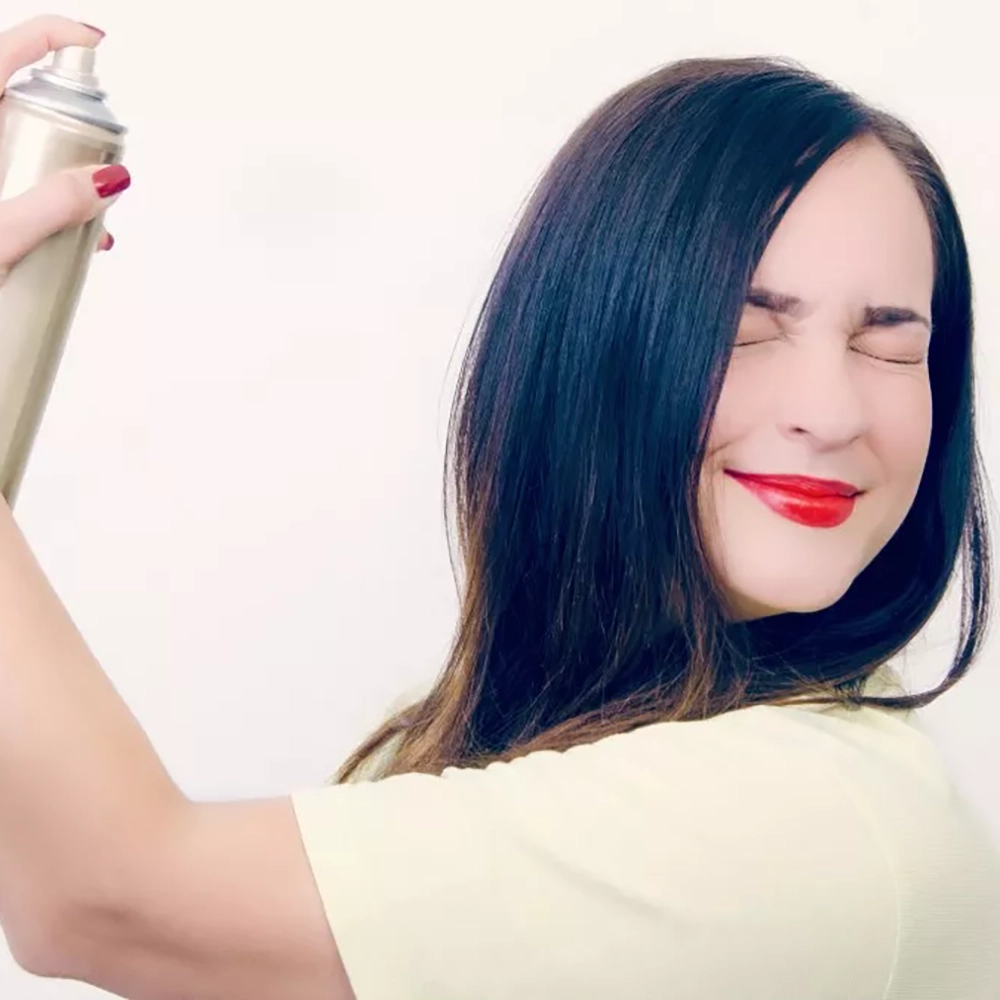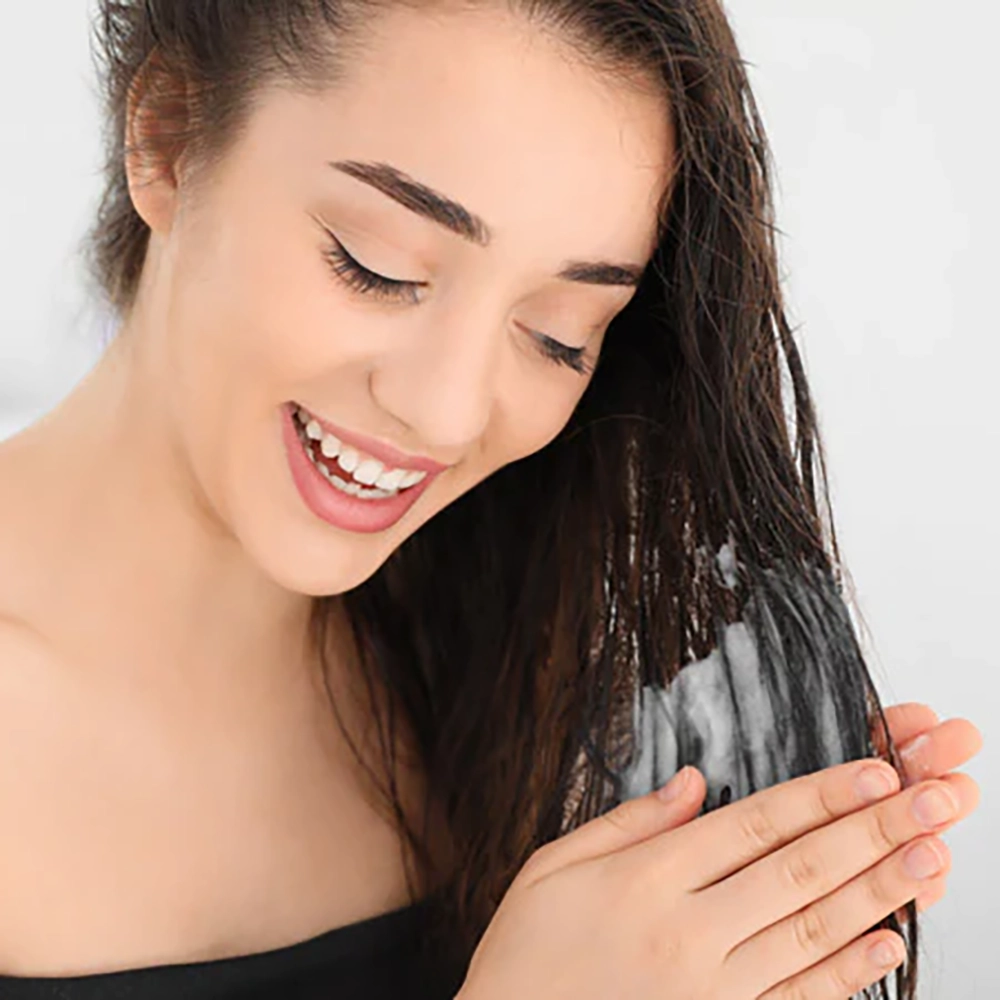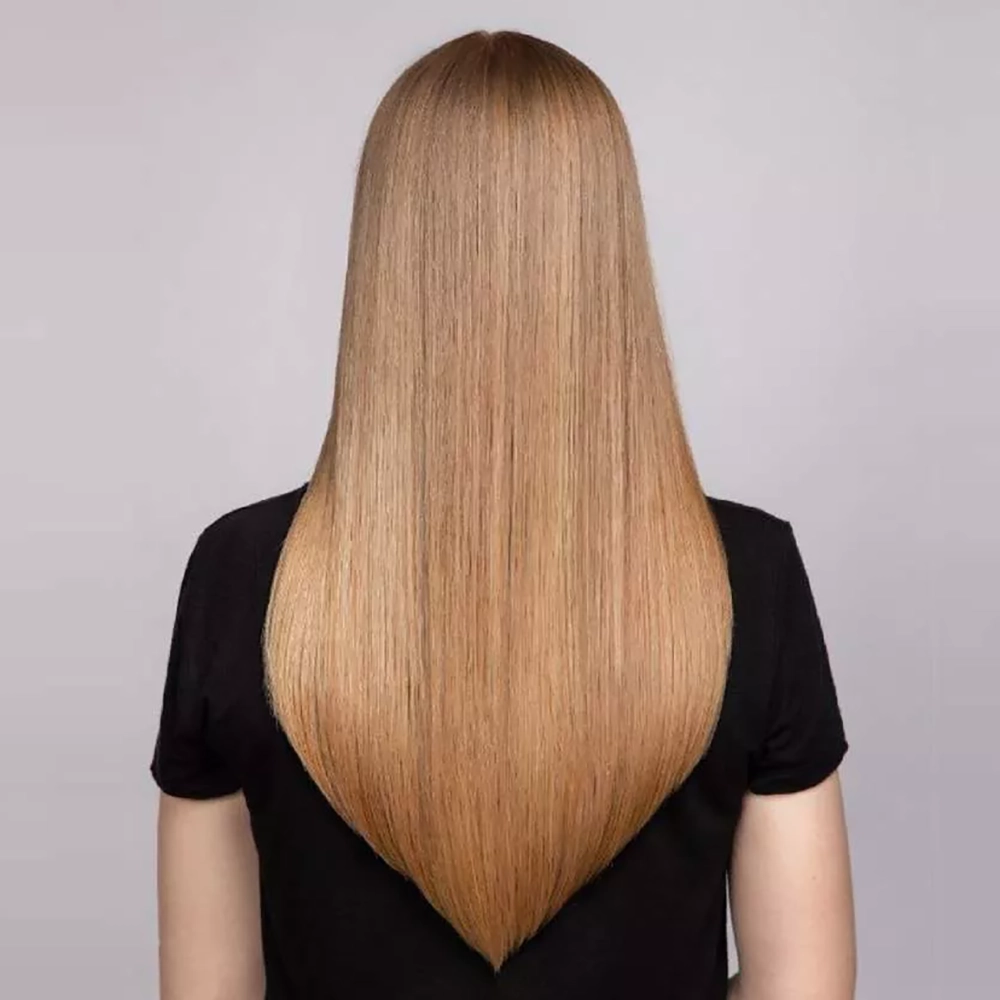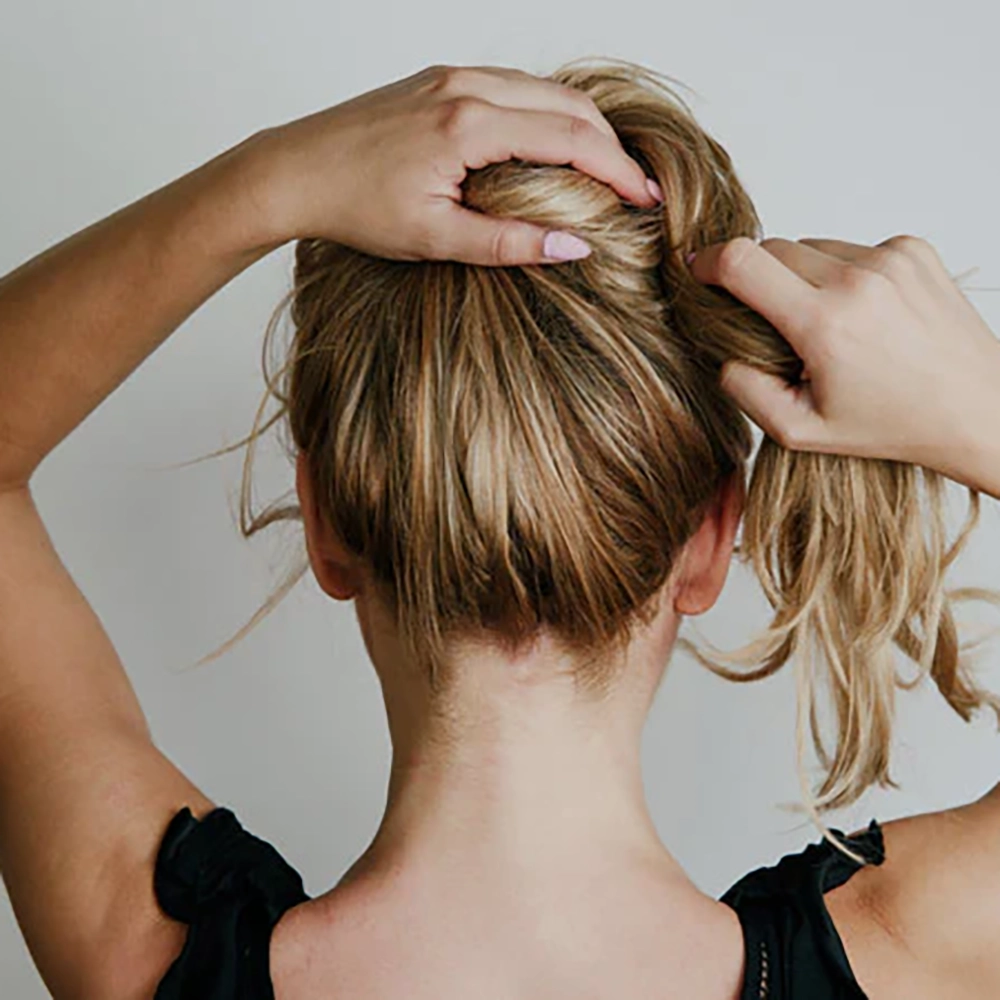Understanding the Basics of Heat Protection
When it comes to hair care, heat protection is an important aspect that shouldn’t be overlooked. Understanding the basics of heat protection can help prevent heat damage and maintain the health of your hair. Heat damage occurs when excessive heat is applied to the hair, causing it to become weak, dry, and brittle. By implementing the right heat protection measures, you can enjoy styling your hair without causing long-term damage.
The first step in understanding heat protection is knowing the different types of heat damage. There are two main types: direct heat damage and indirect heat damage. Direct heat damage occurs when heat styling tools such as flat irons, curling irons, or blow dryers are used directly on the hair. Indirect heat damage, on the other hand, happens when the hair is exposed to excessive heat from sources like the sun or hot weather conditions. It’s crucial to be aware of both types and take appropriate measures to protect your hair.
Choosing the right heat protectant product is another essential aspect of heat protection. Look for products that specifically mention heat protection on the label. These products usually contain ingredients that form a protective barrier on the hair, shielding it from the damaging effects of heat. Some common ingredients to look for include silicone, keratin, and natural oils. Applying a heat protectant product before using any heat styling tools is a simple yet effective way to safeguard your hair.
Implementing proper heat styling techniques is equally important for protecting your hair from heat damage. Always start by using the lowest heat setting possible on your styling tools. Avoid holding the tool in one spot for too long, as this can cause excessive heat exposure. Additionally, using a heat protectant spray throughout the styling process can provide additional protection. It’s also a good practice to give your hair regular breaks from heat styling to allow it to recover and prevent excessive damage.
Maintaining a heat-free hairstyle is a great way to prevent heat damage altogether. There are plenty of heat-free hairstyles that can still give you a stylish look without the need for heat styling tools. Some popular options include braids, twists, buns, and updos. These hairstyles not only protect your hair from heat damage but also offer versatility and creativity in your hair styling routine.
Incorporating a hair care routine that minimizes heat damage is crucial for the overall health of your hair. This includes limiting the use of heat styling tools, using heat protectant products, and adopting heat-free hairstyles whenever possible. Additionally, ensuring your hair is well-nourished and hydrated with regular conditioning treatments and deep conditioning masks can help strengthen it against heat damage.
Despite taking all the necessary precautions, sometimes heat damage may still occur. In such cases, it’s important to know effective heat damage repair and treatment solutions. These may include using restorative hair masks, moisturizing treatments, and trimming the damaged ends regularly. It’s also advisable to seek professional advice from a hair stylist or trichologist to determine the best course of action for repairing heat-damaged hair.
Understanding the basics of heat protection is essential for maintaining the health and integrity of your hair. By being knowledgeable about the different types of heat damage, choosing the right heat protectant products, implementing proper heat styling techniques, incorporating heat-free hairstyles, and following a hair care routine to minimize heat damage, you can enjoy styling your hair while keeping it healthy and damage-free.
Identifying the Different Types of Heat Damage
Heat damage is a common issue among individuals who regularly use heat styling tools on their hair. The use of hair dryers, curling irons, and straighteners can cause various types of heat damage, which can significantly affect the health and appearance of your hair. Understanding and identifying these different types of heat damage is crucial in effectively treating and preventing further harm to your hair.
One of the most common types of heat damage is known as thermal damage. This occurs when excessive heat is applied to the hair, causing the cuticle layer to lift, leading to moisture loss and an overall dull appearance. Signs of thermal damage include frizz, dryness, split ends, and a lack of shine. It is important to address thermal damage promptly to prevent further breakage and brittleness.
Another type of heat damage is called heat-induced protein denaturation. This occurs when the high temperatures from styling tools cause the protein structure within the hair shaft to break down. Over time, this can lead to weak and fragile hair that is prone to breakage. Signs of protein denaturation include excessive hair shedding, lack of elasticity, and overall weakened hair strands. Implementing protein treatments and reducing heat exposure can help restore the health of the hair.
Additionally, repeated use of heat styling tools can lead to heat-related moisture damage. This occurs when the excessive heat strips the hair of its natural moisture and oils, leaving it dry, brittle, and prone to breakage. Signs of moisture damage include extreme dryness, a lack of elasticity, and an overall dull appearance. To combat moisture damage, it is essential to incorporate hydrating hair products and minimize heat exposure by opting for heat-free styling techniques.
| Type of Heat Damage | Signs and Symptoms |
|---|---|
| Thermal Damage |
|
| Heat-Induced Protein Denaturation |
|
| Heat-Related Moisture Damage |
|
Identifying the different types of heat damage is crucial in determining the appropriate course of action for hair repair and prevention. Each type of heat damage requires specific treatments and techniques to restore and protect the hair’s health. By being aware of the signs and symptoms, individuals can make informed decisions regarding their hair care routines and product choices, reducing the risk of further heat damage and promoting healthier, more resilient hair.
Choosing the Right Heat Protectant Product
When it comes to protecting our hair from heat damage, one of the most important factors to consider is choosing the right heat protectant product. Heat protectants are specially formulated products that provide a barrier between our hair and the heat styling tools we use, such as flat irons, curling irons, and blow dryers. These products help minimize the negative effects of heat on our hair, such as dryness, frizz, and breakage.
When selecting a heat protectant product, it is crucial to consider the specific needs of your hair. Everyone’s hair is unique, and different products may work better for different hair types and textures. One of the key factors to look for in a heat protectant is its heat protection level. Make sure to choose a product that can handle the level of heat you typically use on your hair. This information is usually indicated on the product packaging or label.
In addition to heat protection, it is also beneficial to choose a heat protectant that offers other hair care benefits. Some products contain ingredients that provide hydration, nourishment, and repair to the hair, helping to improve its overall health and condition. Look for heat protectants that contain ingredients such as argan oil, keratin, or vitamins that can help moisturize and strengthen your hair.
- Argan oil: Known for its moisturizing properties, argan oil can help prevent damage and add shine to your hair.
- Keratin: Keratin is a protein that can help strengthen and protect the hair from heat damage.
- Vitamins: Certain vitamins, such as vitamin E, can nourish the hair and promote its overall health.
| Product Name | Heat Protection Level | Additional Benefits |
|---|---|---|
| Product A | High | Contains argan oil for hydration |
| Product B | Medium | Infused with keratin for added strength |
| Product C | Low | Enriched with vitamins for overall hair health |
Furthermore, consider the application method and formula of the heat protectant. Some products come in spray form, while others are creams or serums. Choose a formula that aligns with your preferred application method and hair styling routine.
Ultimately, selecting the right heat protectant product is essential for safeguarding your hair from heat damage. Take the time to research and find a product that suits your hair’s unique needs and offers the necessary level of heat protection. Remember to apply the heat protectant evenly through your hair before using any heat styling tools to ensure maximum effectiveness. With the right heat protectant in your hair care routine, you can enjoy beautiful, heat-styled hair while minimizing the risk of damage.
Proper Heat Styling Techniques for Hair Protection
When it comes to styling our hair, heat tools like flat irons, curling irons, and blow dryers have become our trusted allies. However, excessive heat can cause significant damage to our hair, leaving it weak, brittle, and prone to breakage. To prevent such damage, it is essential to learn and implement proper heat styling techniques. In this blog post, we will explore some effective techniques that will help protect your hair from heat damage.
1. Use a Heat Protectant:
Before applying any heat tools to your hair, always remember to apply a heat protectant serum or spray. These products create a protective barrier between your hair and the heat, minimizing the damage caused.
2. Adjust the Heat Settings:
Each hair type requires different heat settings. It’s important to find the right balance between effective styling and minimizing damage. Fine or damaged hair should be styled on lower heat settings, while thicker or coarser hair may require higher heat.
3. Limit Heat Exposure:
One of the best ways to protect your hair from heat damage is by limiting heat exposure. Avoid using heat styling tools every day and opt for heat-free hairstyles on some days. This will give your hair a break and allow it to recover from any damage.
By following these proper heat styling techniques, you can enjoy styling your hair while minimizing the risk of heat damage. Remember, taking care of your hair’s health should always be the priority, so pay attention to the products you use and the heat settings you choose. Implement these techniques, and you’ll be one step closer to achieving beautiful, healthy hair!
Creating Heat-Free Hairstyles for Damage Prevention
Heat styling tools like flat irons, curling irons, and blow dryers can give us fabulous hairstyles in no time, but regular use of these tools can take a toll on our hair. Excessive heat can lead to dryness, breakage, and even irreversible damage. To counteract this, it’s important to incorporate heat-free hairstyles into our hair care routines. Not only will these hairstyles help protect our hair from damage, but they can also be incredibly stylish and versatile.
One heat-free hairstyle that is both simple and effective is the classic bun. To create this style, start by gathering your hair into a high ponytail and securing it with an elastic band. Then, twist the ponytail around itself to form a bun and secure it with bobby pins. This sleek and chic hairstyle not only keeps your hair off your face but also minimizes heat exposure. To add a touch of glamour, you can adorn your bun with decorative hairpins or a stylish hairband.
Another heat-free hairstyle option is the braided updo. Braids are not only a fashionable trend, but they also provide protection against heat damage. Begin by dividing your hair into three sections and braid each section tightly. Next, cross the braids over each other, securing them with bobby pins to create an intricate updo. This style adds a touch of elegance to your overall look while keeping your hair free from damaging heat.
- In addition to buns and braids, there are many more heat-free hairstyles to explore.
- Twisted ponytails, half-up hairstyles, and top knots are just a few examples.
- By experimenting with different hairstyles, you can give your hair a break from heat styling tools and minimize the risk of damage.
| Heat-Free Hairstyles | Description |
|---|---|
| Braided Crown | A romantic and elegant hairstyle where your hair is braided into a crown-like structure around your head. |
| Messy Bun | A trendy and effortless hairstyle that involves gathering your hair into a loose, tousled bun. |
| Fishtail Braid | A chic and intricate braid that resembles a fishtail, created by dividing your hair into two sections and crossing small pieces of hair from each section over one another. |
| Low Ponytail | A sleek and sophisticated hairstyle where your hair is gathered at the base of your neck and secured with an elastic band. |
Remember, adopting heat-free hairstyles doesn’t mean sacrificing style. With a wide variety of options available, you can still achieve a fashionable and polished look while giving your hair the break it deserves. So, next time you’re getting ready to style your hair, consider trying out one of these heat-free hairstyles for both protection and style.
Implementing Hair Care Routines to Minimize Heat Damage
Heat styling tools and techniques can give us fabulous hairstyles, but they can also cause significant damage to our hair. Excessive heat can lead to dryness, frizz, breakage, and even split ends. However, with proper care and a few simple adjustments to our hair care routines, we can minimize the heat damage and maintain healthy and beautiful hair.
1. Use a heat protectant: The first step in minimizing heat damage is to apply a heat protectant product to your hair before using any heat styling tools. Heat protectants create a barrier between your hair and the heat, reducing the chances of damage. Look for products that contain ingredients like silicone or argan oil, as they provide excellent heat protection.
2. Adjust heat settings: When using heat styling tools, it’s crucial to adjust the heat settings based on your hair type and the style you want to achieve. Fine or damaged hair requires lower heat settings, while thicker or coarser hair can withstand higher temperatures. It’s best to start with the lowest setting and gradually increase if necessary.
3. Limit heat exposure: To minimize heat damage, it’s essential to limit the frequency and duration of heat styling. Try to give your hair regular breaks from heat by opting for heat-free hairstyles a few times a week. Experiment with braids, updos, or natural styles that don’t require heat to give your hair time to recover.
4. Invest in quality tools: Using high-quality heat styling tools can make a significant difference in minimizing damage. Look for tools with ceramic or tourmaline plates, as they distribute heat more evenly and reduce the risk of hot spots. Additionally, invest in a good quality hair dryer with multiple heat and speed settings to prevent excessive heat exposure.
5. Deep condition regularly: Heat styling can strip moisture from your hair, making it more susceptible to damage. To replenish lost moisture and keep your hair healthy, incorporate deep conditioning treatments into your hair care routine. Choose a nourishing hair mask or deep conditioner and use it once a week to keep your locks hydrated and strong.
By implementing these hair care routines, you can minimize heat damage and keep your hair looking its best. Remember, prevention is key when it comes to protecting your hair from heat. Take the necessary steps to care for your hair, and it will reward you with shine, strength, and resilience.
| Key Tips: |
|---|
| 1. Use a heat protectant before heat styling. |
| 2. Adjust heat settings based on your hair type. |
| 3. Limit the frequency and duration of heat styling. |
| 4. Invest in high-quality heat styling tools. |
| 5. Deep condition your hair regularly. |
Effective Heat Damage Repair and Treatment Solutions
Heat damage is a common concern for many people who regularly style their hair using heat tools such as flat irons, curling irons, and blow dryers. Excessive heat can cause the hair to become dry, brittle, and prone to breakage. Fortunately, there are several effective heat damage repair and treatment solutions that can help restore and protect your hair.
One of the most important steps to repairing heat-damaged hair is to deep condition regularly. Deep conditioning treatments provide intense moisture and nourishment to the hair, helping to restore its health and vitality. Look for deep conditioning products that contain ingredients such as keratin, argan oil, or shea butter, as these can help repair and strengthen the hair.
In addition to deep conditioning, using a heat protectant spray or serum before styling your hair with heat tools is essential. Heat protectants create a barrier between your hair and the high temperatures, reducing the risk of damage. Look for products that contain ingredients like silicone or dimethicone, as these provide a protective coating on the hair.
Trimming regularly is another important step in repairing and preventing further heat damage. Split ends and breakage can make the hair appear frizzy and damaged. By trimming off the damaged ends, you can promote healthier hair growth and prevent the damage from spreading further up the hair shaft.
- Deep condition regularly
- Use a heat protectant spray or serum
- Trim your hair regularly to remove split ends and prevent further damage
- Avoid excessive heat styling
- Limit the use of heat tools
| Solution | Description |
|---|---|
| Deep Conditioning | Moisturizes and nourishes the hair, helping to restore its health and vitality. |
| Heat Protectant Spray/Serum | Creates a barrier between the hair and high temperatures, reducing the risk of damage. |
| Regular Trimming | Removes split ends and prevents further damage, promoting healthier hair growth. |
| Avoid Excessive Heat Styling | Minimizes the exposure of the hair to high temperatures, reducing the risk of heat damage. |
It’s also important to limit the use of heat tools. If possible, try to embrace heat-free hairstyles and give your hair a break from the damaging effects of heat styling. There are numerous heat-free styling options available, such as braids, updos, and natural curls.
In conclusion, effective heat damage repair and treatment solutions involve deep conditioning, using heat protectants, regular trimming, avoiding excessive heat styling, and embracing heat-free hairstyles. By incorporating these practices into your hair care routine, you can help repair existing heat damage and prevent further damage, leaving your hair looking healthier and more resilient.




































